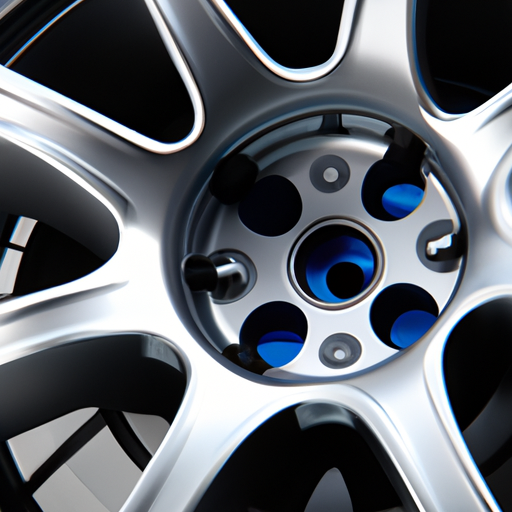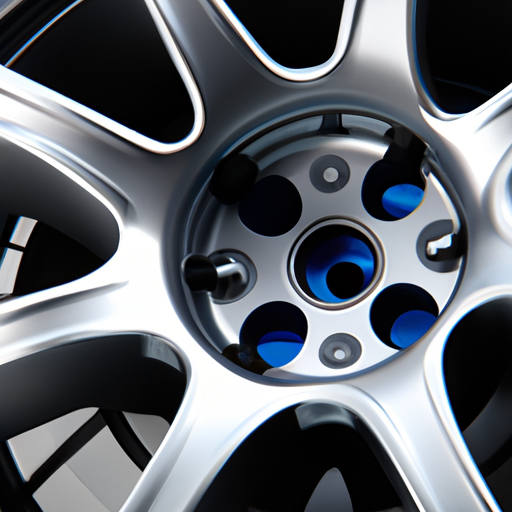Have you ever wondered why your car wheels have a small hole in the center? This unassuming feature, known as the center bore, serves a crucial purpose in ensuring the safety and stability of your vehicle. Acting as the connection point between the wheel and the hub, the center bore plays a vital role in maintaining proper alignment and preventing vibrations while driving. In this article, we will explore the significance of the center bore in car wheels and how it contributes to a smooth and secure ride. So, let’s delve into the world of wheels and discover the hidden importance of this tiny yet essential component.
Definition of Center Bore
Understanding the concept
The center bore of a car wheel refers to the hole located at the center of the wheel. It is the opening through which the wheel gets mounted onto the hub of the vehicle. The size and design of the center bore may vary across different wheels and vehicles. Understanding the concept of the center bore and its importance can help ensure proper fitment, optimal performance, and a smoother ride.
Physical feature of a wheel
The center bore is a crucial physical feature of a car wheel. It is typically a perfectly round hole that runs through the center of the rim. The diameter and depth of the center bore determine how the wheel fits onto the hub of the vehicle. The shape and design of the center bore may also have an impact on the overall aesthetics of the wheel.
Importance of Center Bore
Wheel Mounting
The center bore plays a vital role in securely mounting the wheel onto the hub of the vehicle. It establishes a proper connection between the wheel and the hub, ensuring stability and preventing any wobbling or movement. The center bore enables accurate alignment of the wheel, allowing the lug bolts or lug nuts to safely secure the wheel onto the hub.
Balancing
Another significant importance of the center bore is balancing the wheel. Proper wheel balancing is crucial for a smooth and comfortable ride. The center bore enables the installation of balancing weights on the inner side of the wheel, helping distribute the weight evenly and minimizing vibrations.
Vibration Reduction
The center bore also contributes to reducing vibrations while driving. By providing a precise fit on the hub, the center bore helps dampen and absorb vibrations, resulting in a smoother and more enjoyable ride. It effectively reduces the transfer of road-induced vibrations to the vehicle’s suspension and steering system, enhancing overall ride comfort.

Wheel Mounting
Establishing Wheel-to-Hub Connection
The center bore is primarily responsible for establishing a secure connection between the wheel and the hub of the vehicle. The hub, located at the center of the vehicle’s axle, contains the wheel studs or bolts that hold the wheel in place. The center bore of the wheel needs to precisely match the diameter of the hub to ensure a proper fit and prevent any play or movement.
Supporting Wheel Load
In addition to connecting the wheel to the hub, the center bore also supports a significant portion of the wheel load. As the vehicle moves, various forces, such as weight and road conditions, act on the wheels. The center bore distributes these forces and ensures that the load is evenly distributed across the wheel, reducing the stress on individual lug bolts or nuts.
Securing Wheel Bolts
The center bore also plays a role in securing the wheel bolts or lug nuts. When the wheel is properly aligned and centered on the hub using the center bore, the tightening of the lug bolts becomes more effective. This ensures that the wheels remain securely attached to the vehicle even under strenuous conditions, such as high speeds or rough terrains.
Balancing
Ensuring Proper Weight Distribution
One of the crucial aspects of wheel balancing is the proper distribution of weight. The center bore allows for the installation of balancing weights on the inner side of the wheel, opposite to the heavy spots identified during the balancing process. This helps achieve a harmonious weight distribution, eliminating any imbalances and reducing vibrations during rotation.
Reducing Vibration
Balancing the wheel using the center bore helps reduce vibrations caused by imbalances. When the wheel is perfectly balanced, it spins smoothly without any oscillations, leading to a more comfortable and stable ride. By minimizing vibrations, wheel balancing also contributes to the longevity of the suspension components, tires, and other wheel-related parts.
Preventing Tire Wear
Proper wheel balancing through the center bore is essential in preventing premature tire wear. Imbalances can cause uneven tread wear, resulting in reduced tire life and compromised performance. By evenly distributing the weight on the wheel, the center bore helps maintain optimal tire contact with the road surface, ensuring even wear patterns and extended tire lifespan.

Vibration Reduction
Dampening Vibrations
The center bore plays a significant role in dampening vibrations transmitted from the road to the wheel. By providing a precise fit on the hub, the center bore acts as a vibration damper. It absorbs and disperses vibrations, preventing them from reaching the suspension system and minimizing the discomfort experienced by the vehicle occupants.
Enhancing Ride Comfort
Reducing vibrations through the center bore enhances overall ride comfort. By minimizing the transfer of road-induced vibrations, the center bore helps create a more smooth and pleasant driving experience. It allows for better isolation from road imperfections and bumps, leading to less fatigue and a more enjoyable journey for the driver and passengers.
Center Bore Sizes
Variations in Car Wheel Center Bores
Car wheel center bores can vary in size across different vehicles and wheel manufacturers. Each vehicle make and model may have specific center bore dimensions that need to be taken into consideration when selecting wheels. Failure to harmonize the center bore size may result in improper fitment and potential safety hazards.
Importance of Correct Sizing
Having the correct center bore size is crucial for proper wheel fitment. A center bore that is too small for the hub may prevent the wheel from sitting flush, causing instability and affecting vehicle handling. On the other hand, a center bore that is too large may result in excessive play and increased stress on the lug bolts or nuts, compromising the integrity of the wheel-to-hub connection.

Variations in Car Wheel Center Bores
Different Vehicle Manufacturers
Different vehicle manufacturers employ varying center bore sizes to suit their specific designs and requirements. It is essential to consider these variations when purchasing wheels for a particular vehicle. By understanding the differences, one can ensure the perfect fit and avoid potential complications during installation.
Wheel Design Differences
Not only do vehicle manufacturers have different center bore sizes, but wheel manufacturers also have individual design preferences. Some wheels may come with a larger or smaller center bore than others. When selecting aftermarket wheels, it is important to consider the compatibility with the vehicle’s hub size and choose a wheel with a suitable center bore diameter.
Aftermarket Wheel Considerations
For those seeking to upgrade their vehicle’s wheels with aftermarket options, center bore compatibility is a critical consideration. Aftermarket wheels may have different center bore sizes compared to the original equipment wheels. This may require the use of hub-centric rings to adapt the center bore of the aftermarket wheel to the hub size of the vehicle.
Importance of Correct Sizing
Wheel Centering
Having the correct center bore size ensures proper wheel centering. A well-centered wheel aligns with the hub, ensuring equal weight distribution and balanced handling. Proper wheel centering minimizes the chances of vibrations, wheel wobbling, and potential damage to the suspension or steering components.
Preventing Vibration
Correct sizing of the center bore reduces the risk of vibrations during driving. A properly sized center bore allows for optimal hub-to-wheel contact, minimizing any gaps or play that could generate vibrations. By preventing excess movement and instability, correct center bore sizing helps maintain a smooth and vibration-free ride.
Avoiding Potential Damage
Using the correct center bore size is crucial for avoiding potential damage to both the wheels and the vehicle. A center bore that is too small may lead to excessive pressure on the lug bolts or nuts, causing them to loosen or strip. Conversely, a center bore that is too large may result in wobbling, uneven wear, and compromised handling. By selecting the appropriate center bore size, one can ensure the longevity of both the wheels and the vehicle.

Center Bore and Hub-Centric Rings
Role of Hub-Centric Rings
Hub-centric rings are often used to adapt the center bore of aftermarket wheels to match the hub size of the vehicle. These rings fill the gap between the wheel’s larger center bore and the smaller hub size, ensuring a secure and precise fit. Hub-centric rings act as a spacer, reducing vibrations, enhancing stability, and maintaining proper wheel centering.
Ensuring Proper Fitment
Choosing and installing the correct hub-centric rings is crucial to ensure proper fitment of aftermarket wheels. These rings should precisely match the center bore of the wheel and the hub size of the vehicle. By using hub-centric rings, one can eliminate potential vibration issues and ensure an accurate and stable connection between the wheel and the hub.
Installation Guidelines
When installing hub-centric rings, it is essential to follow specific guidelines. The rings should be clean and free from any debris before installation. They should be centered properly within the center bore of the wheel and pressed firmly onto the hub. It is crucial to select hub-centric rings made of high-quality materials to ensure durability and optimal performance.
In conclusion, the center bore of a car wheel is a crucial component that plays a significant role in wheel mounting, balancing, vibration reduction, and overall ride comfort. Understanding the concept of the center bore and its importance is essential for selecting the right wheels, ensuring proper fitment, and maintaining optimal performance and safety on the road. Always consider the variations in center bore sizes, the importance of correct sizing, and the role of hub-centric rings to guarantee a smooth, comfortable, and secure driving experience.

